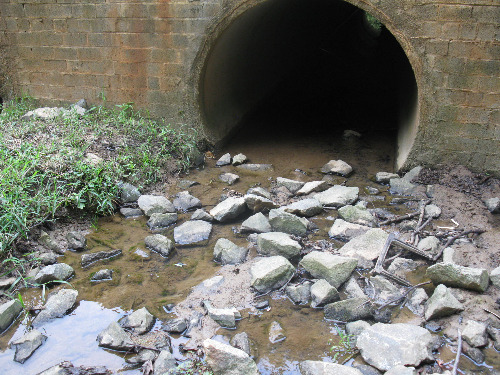![]() It’s not as breathtakingly beautiful and soul-cleansing as crystal clear springs in forested mountains, but this is the present and future of many of the world’s streams, and the way that most people interact with their local stream and watershed, if they even think about it all. With over half of the world’s population now living in cities, and with streams serving simultaneously as water supply and wastewater disposal system for that population, there is an urgent need to understand how streams, groundwater, and ecosystems survive, adapt, or are extinguished by urban development. In a sense, urban watersheds are the future of hydrologic science, aqueous biogeochemistry, and stream ecology.
It’s not as breathtakingly beautiful and soul-cleansing as crystal clear springs in forested mountains, but this is the present and future of many of the world’s streams, and the way that most people interact with their local stream and watershed, if they even think about it all. With over half of the world’s population now living in cities, and with streams serving simultaneously as water supply and wastewater disposal system for that population, there is an urgent need to understand how streams, groundwater, and ecosystems survive, adapt, or are extinguished by urban development. In a sense, urban watersheds are the future of hydrologic science, aqueous biogeochemistry, and stream ecology.
It took me moving to a rapidly-growing, sprawling southeastern city before I saw the light of urban hydrology, but the more time I spend looking at the waters around me, the more intriguing and applied questions I find myself asking. Do stormwater ponds serve as point sources of groundwater recharge? What happens to stream temperature with different styles of development and stormwater management? And what difference does that make for stream ecosystems? Does stream restoration change hyporheic exchange and surface water storage in an ecologically beneficial manner? Fortunately, not only has North Carolina piqued my interest in urban watersheds, but it has provided me with a set of like-minded colleagues and collaborators with whom I am developing new projects. This month the first two of those projects have begun to bear fruit, in the form of a new paper and a new research grant.
In an open-access paper published in the journal Water, my colleagues and I review the state of the science and identify the open questions in watershed hydrology and in-stream processes in the southern United States. We conclude that while we understand some hydrologic impacts of urbanization reasonably well, there’s a lot we don’t have a great handle on. For example, we call for more research on developing comprehensive water budgets for urban watersheds; evaluating the combined impacts of land-use and climate change; understanding how pre-urbanization land-use history affects stream response; integrating hydrologic connectivity with biogeochemical cycling; and developing a clearer understanding of the complex interactions between catchment and in-stream processes in urban systems. You can read the whole paper by O’Driscoll et al. (2010) in the open-access journal Water.
Along with colleagues Sara McMillan and Sandra Clinton at UNC Charlotte and Christina Tague at UCSB, I’ll be looking at the effects of stormwater management practices on urban headwater streams. We’re taking an interdisciplinary approach that combines hydrology, temperature, water quality, nutrient processing, and macroinvertebrate assemblages through field measurements and modeling. We’re interested in whether the flow and water quality benefits of stormwater management that are seen by comparing pond inflow and outflow actually translate into differences in ecosystem function in the receiving streams. And we’re looking for graduate students to come work with us and help us find the answers. If you are considering graduate school and are interested in hydrology, stream ecology, or biogeochemistry, check out the project description and application instructions here.




Comments (2)
Links (1)-
Pingback: Where we’ll be at AGU | Highly Allochthonous